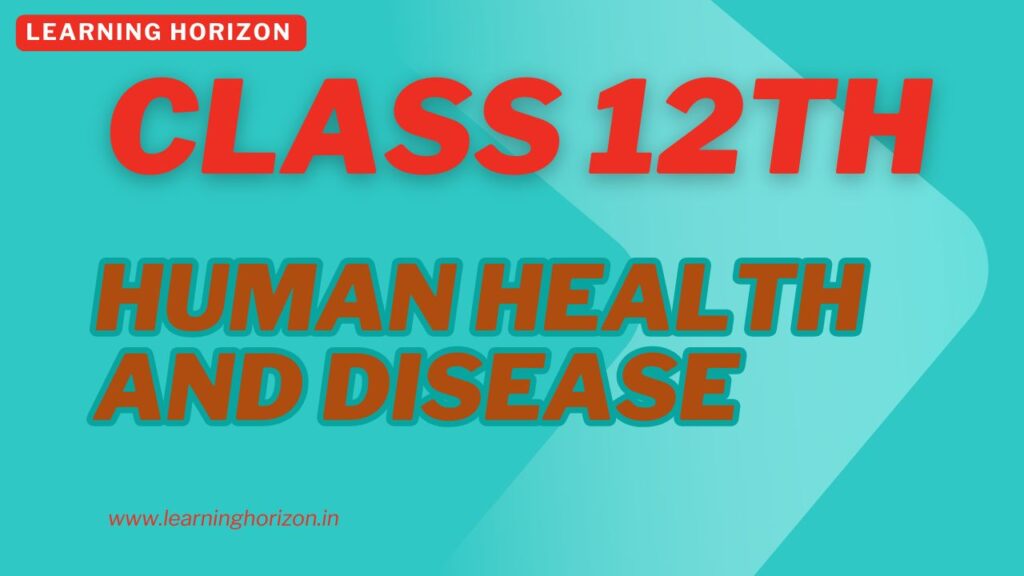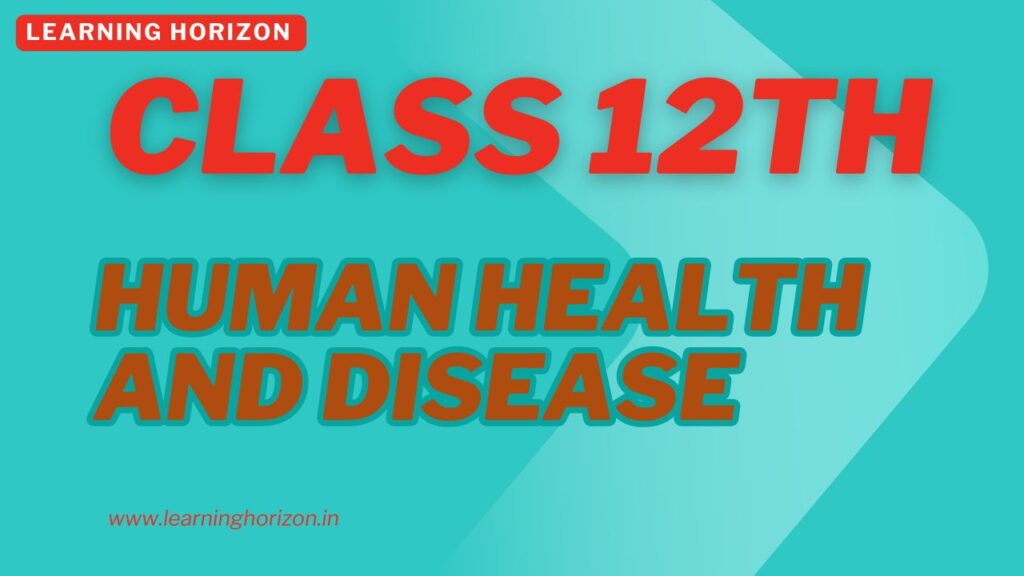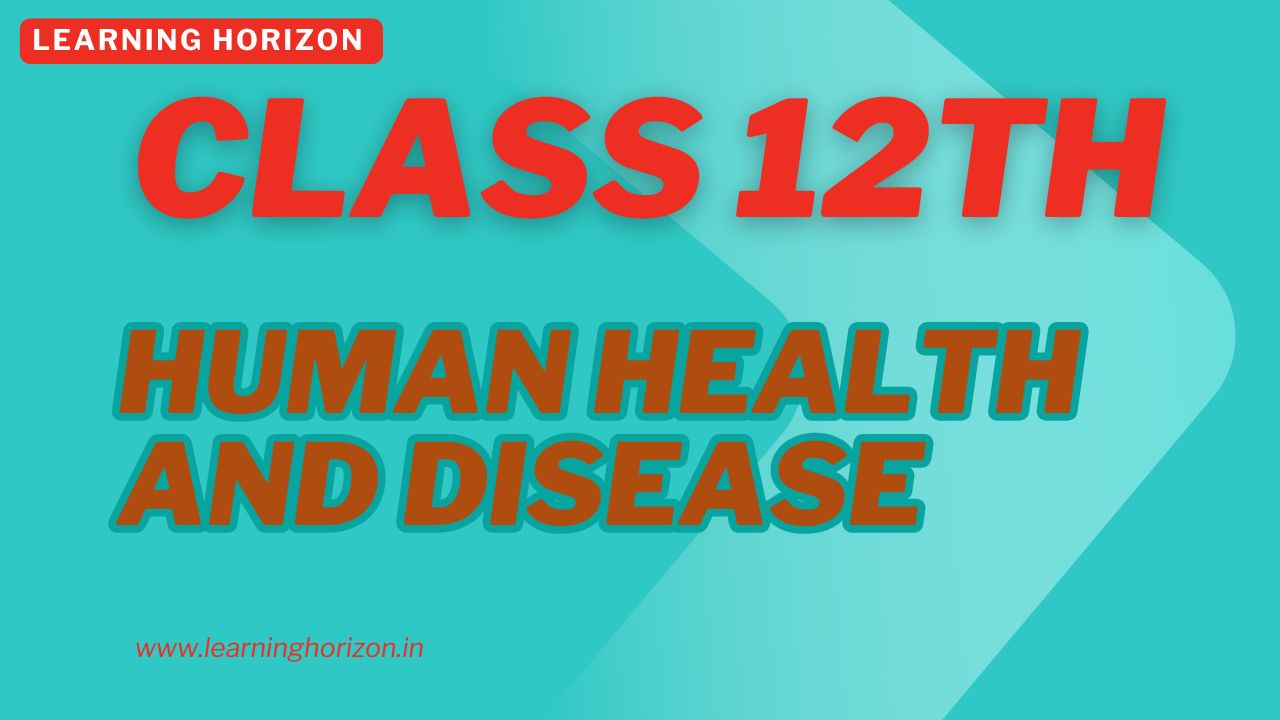Table of Contents

Human Health and Disease Class 12 Handwritten Notes PDF
Human Health and Disease Class 12 is an important chapter of NCERT Biology that deals with common diseases, their prevention, the role of the immune system, and methods of maintaining good health. These notes cover bacterial, viral, protozoan diseases, immunity (innate & acquired), vaccines, AIDS, cancer, and drug/alcohol . Perfect for CBSE Board exams and NEET preparation, this chapter helps students strengthen concepts with short notes, NCERT solutions, and MCQs.
Human Health and Disease – Class 12 Biology Notes
🟢 1. Introduction
- Health = State of complete physical, mental, and social well-being (WHO).
- Disease = Malfunctioning of body/organs due to infection, deficiency, genetic disorder, or lifestyle.
🟢 2. Common Diseases in Humans
(A) Bacterial Diseases
- Typhoid: Salmonella typhi → fever, weakness, constipation; diagnosed by Widal test.
- Pneumonia: Streptococcus pneumoniae → lungs infection, fever, cough, chills.
(B) Viral Diseases
- Common Cold: Rhinovirus → nasal congestion, sore throat.
- Dengue: Dengue virus (Aedes mosquito vector).
- Chikungunya: Aedes mosquito borne.
(C) Protozoan Diseases
- Malaria: Plasmodium (vivax, falciparum, malariae, ovale); female Anopheles mosquito vector.
- Amoebiasis: Entamoeba histolytica → loose stools, abdominal pain.
(D) Helminthic Diseases
- Ascariasis: Ascaris lumbricoides → abdominal pain, anemia.
- Filariasis (Elephantiasis): Wuchereria bancrofti → swelling of legs/scrotum.
🟢 3. Immunity
(A) Types of Immunity
- Innate Immunity (inborn, non-specific):
- Physical barriers – skin, mucus.
- Physiological barriers – HCl, saliva, tears.
- Cellular barriers – WBCs (neutrophils, macrophages).
- Cytokine barriers – interferons.
- Acquired Immunity (specific, adaptive):
- Humoral immunity: B-lymphocytes produce antibodies.
- Cell-mediated immunity: T-lymphocytes kill infected cells.
(B) Vaccination & Immunization
- Vaccines: Weakened/killed pathogens → induce memory cells.
- Examples: Polio, BCG, Hepatitis, DPT.
🟢 4. Immune System Disorders
- Allergy: Hypersensitivity of immune system → histamine release.
- Autoimmunity: Immune cells attack self (e.g., Rheumatoid arthritis).
- Immunodeficiency: Immune system weakens (e.g., AIDS).
🟢 5. AIDS (Acquired Immune Deficiency Syndrome)
- Causative agent: HIV (Human Immunodeficiency Virus).
- Transmission: Unprotected sex, infected needles, blood transfusion, mother-to-child.
- Effect: Infects CD4 helper T-cells → weakens immunity.
- Diagnosis: ELISA test.
- Prevention: Safe sex, disposable syringes, screened blood.
🟢 6. Cancer
- Uncontrolled growth of cells due to mutation.
- Oncogenes → cause tumors.
- Types: Benign (non-spreading), Malignant (metastasis).
- Causes: Carcinogens (chemicals, radiation, virus).
- Treatment: Surgery, Radiation therapy, Chemotherapy, Immunotherapy.
🟢 7. Drug and Alcohol
- Drugs:
- Opioids (Heroin, Morphine) – from poppy plant.
- Cannabinoids (Charas, Ganja, Hashish) – from Cannabis sativa.
- Coca alkaloids (Cocaine) – from Erythroxylum coca.
- Effects: Euphoria, hallucination, organ damage, social problems.
- Alcohol: Liver cirrhosis, loss of self-control, accidents.
- Prevention: Counseling, education, rehabilitation, family support.
🟢 8. Important Diagrams to Practice
- Life cycle of Plasmodium.
- Structure of antibody.
- Graph of primary vs. secondary immune response.
- Mechanism of AIDS infection.

